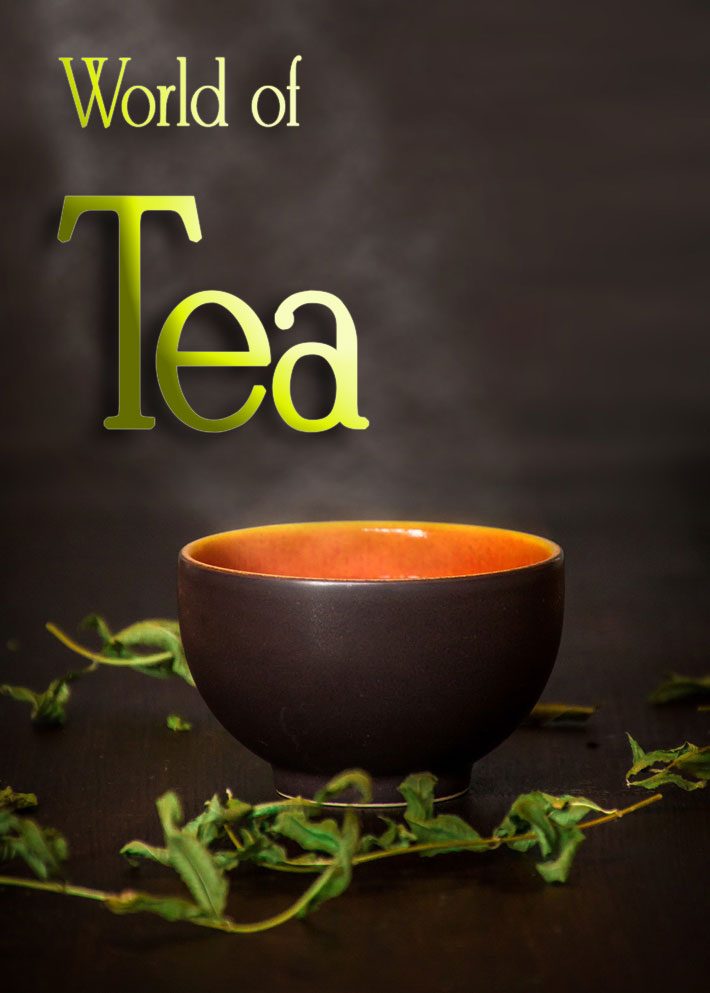
It may surprise you to learn that black, green, white, oolong and pu-erh tea all come from the same plant. We explain the flavor differences and much more.
I love the world of tea with its wide variety of flavors, origins and health benefits. It’s a topic that keeps heaping pleasant surprises at my doorstop. But have you ever wondered, beyond the obvious differences of taste, what makes black tea black or green tea green? It’s all about when it is harvested and how the leaves are treated after it is picked. It is amazing to think of the wide array of flavors that come from just one plant!
Black tea
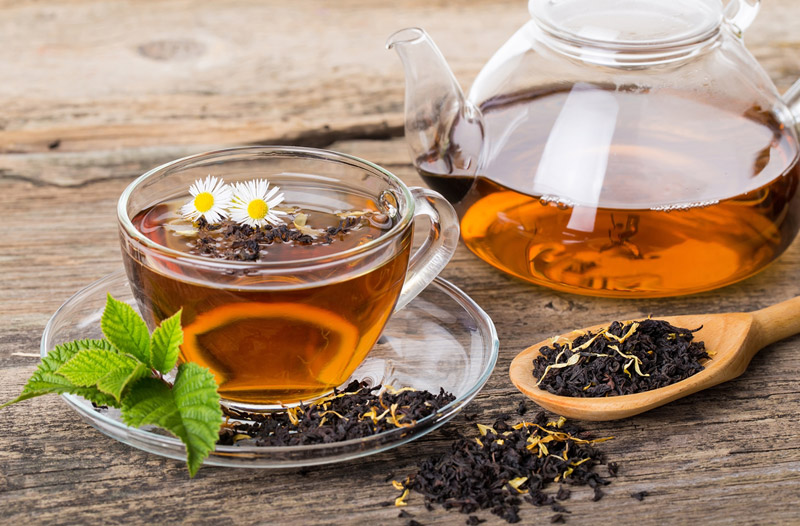
Black tea is a popular choice, with a higher caffeine amount of about 40-50 milligrams of caffeine per cup. Made with the leaves of the Camellia sinensis plant (the tea plant), the leaves are rolled and oxidized until black. This produces a robust tea, and is traditionally used in spiced chai as well.
Oolong tea
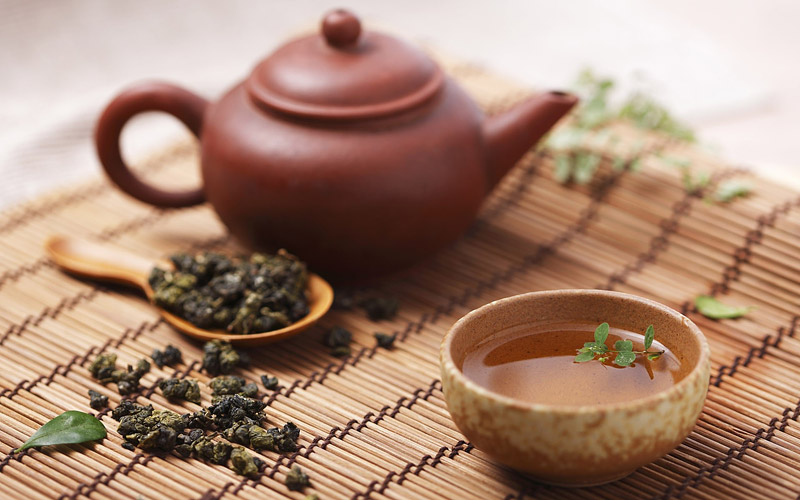
Also made with the leaves of Camellia sinensis, the oolong tea process starts with them withering under the sun. The oxidizing period is for a shorter time frame compared to the black tea, as it is stopped once the leaves give off a fruity fragrance (though note that the rate of oxidation in oolong teas varies greatly on the variety). The leaves are then rolled and fired. Generally, there is a lower amount of caffeine per cup – about 30 milligrams. One way to think of oolong tea is half way between green tea and black.
Green tea

Green tea is made from the same tea plant, but as tea drinkers know, it has a dramatically different flavor. The reason? The leaves are not allowed to oxidize at all, but are heated soon after harvest, allowing them to retain their natural green color. Green tea can be quite grassy, or “green” in flavor, and is often mixed with other flavors, such as flower petals, peppermint or dried fruits. This is the most popular tea in many Asian countries. It is lower yet in caffeine with about 25 milligrams of caffeine per cup. Learn about the health benefits of green tea here.
Matcha tea
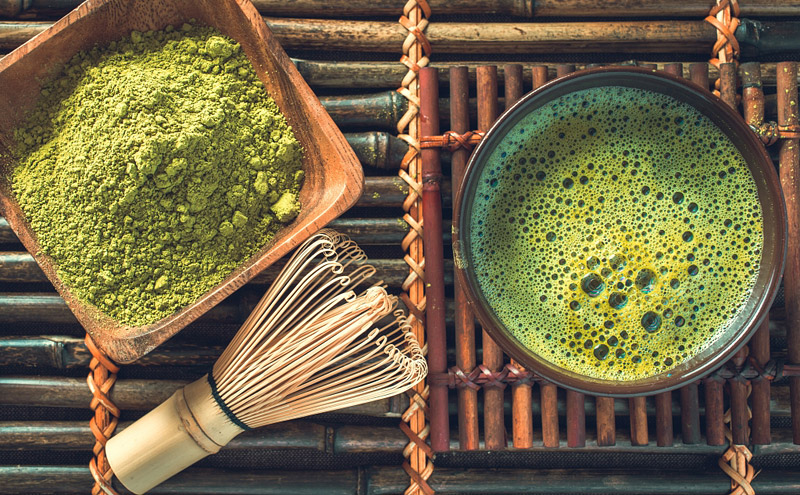
A distinct green tea, this non-oxidized tea is unique because it is made with the whole tea leaf ground into a powder. This powder is then used to make a delicate and antioxidant-rich tea. Learn about the health benefits of matcha tea here.
Yellow tea
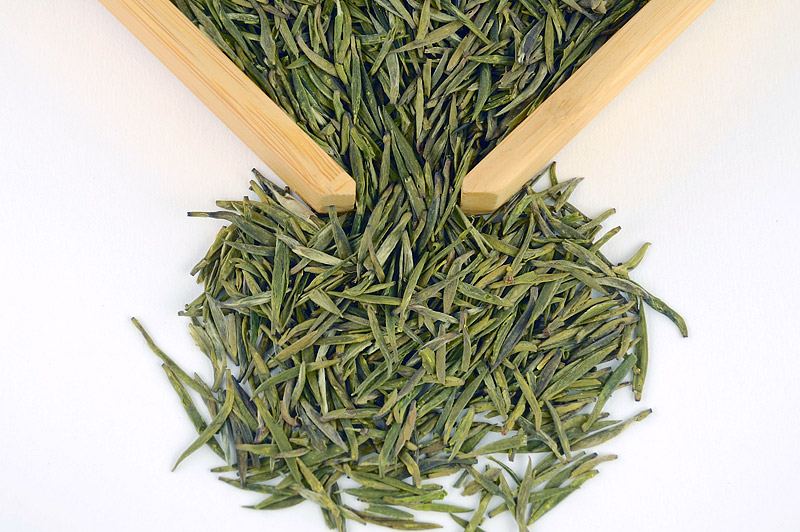
Yellow tea is made in a similar way as green tea, but the leaves are dried slower, allowing the damp leaves to yellow (instead of staying green). The tea leaves will be yellow-green in color, and it has its own unique taste and aroma.
Kukicha or twig tea
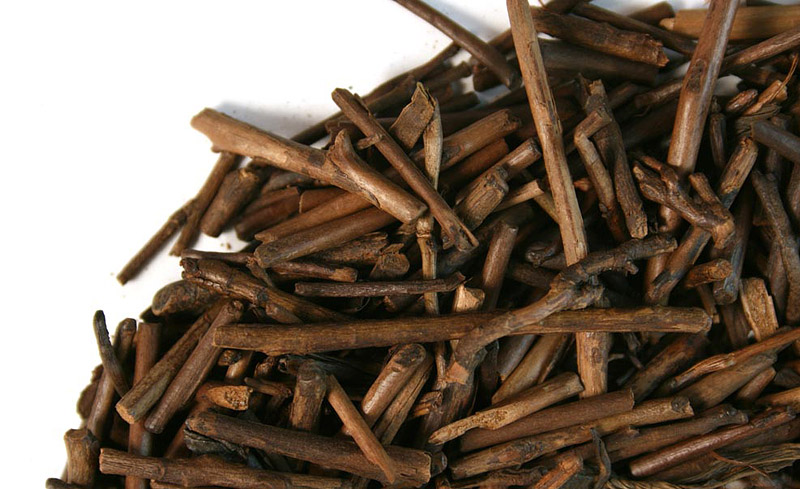
This interesting and low-caffeine tea is made with the stems, stalks and twigs of the tea plant. It is low in caffeine and has a sweet, well-rounded flavor. It can be processed like green tea with no oxidation time, or it can be oxidized.
Pu-erh tea

I was introduced to this tea by the radio show “The Splendid Table,” where it was referred to as a category of “dark tea.” I was inspired to try it, and found a new love. What makes it so special? Instead of being fermented once, it is fermented twice. After it has gone through the normal oxidation process, it is placed in huge covered piles, sprinkled with water, and left to ferment. Natural, good bacteria forms on the tea, much like what happens with yogurt or sauerkraut. Unlike other teas that lose value and flavor with age, a good pu-erh will actually improve in flavor like wine. I love, and recommend it! Like black tea, this is a higher caffeine tea.
White tea

On the other side of the spectrum is white tea. Light in color when brewed, and light in caffeine (about 15 milligrams per cup), it is made with the youngest tea buds and leaves, and is not oxidized at all, but steamed and dried after harvest. Instead of a robust cup of tea, expect a delicate, subtle tea with a natural sweetness. Learn about the health benefits of white tea here.
The tea world truly is amazing! The above are all true teas, made from the tea plant. But there are other beautiful brews to enjoy as well.
Red and green rooibos
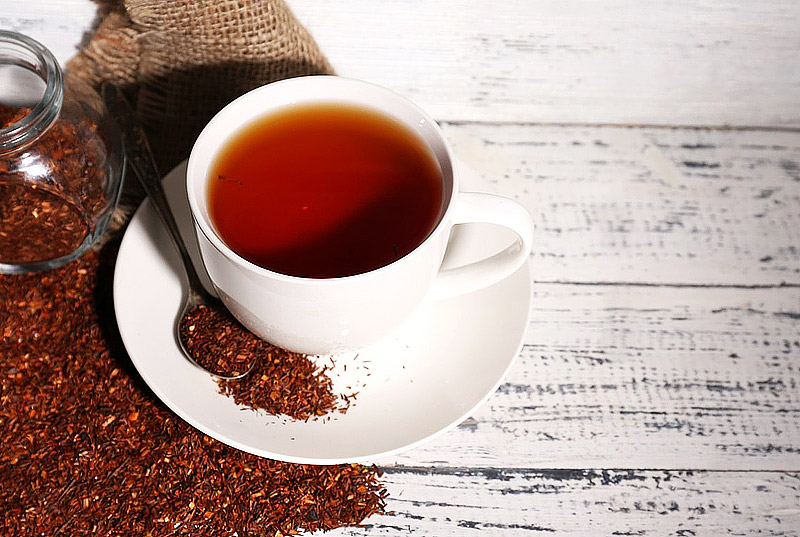
This herbal tea is made from a plant belonging to the legume family. The oxidized version of rooibos has a hearty red color and sweet flavor (my children love it). The green version has not been oxidized and has a grassier flavor, much like green tea. It is caffeine-free. Learn about the health benefits of rooibos tea here.
Honeybush
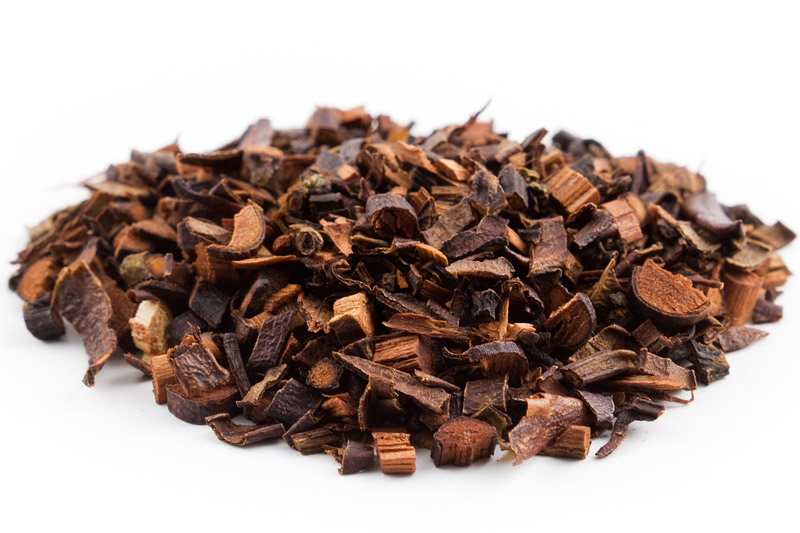
Also from a plant in the legume family, this lovely herbal tea tastes very similarly to rooibos, but is a little sweeter. Honeybush is also a great favorite with children (and caffeine-free as well).
Herbal infusions

Finally, there are a wide variety of teas made with herbs, fruits, flower petals, and spices (sometimes mixed with honeybush and rooibos tea as well). Whether you want a familiar peppermint tea, or an exotically spiced herbal chai, there is a lovely array of herbal teas to explore – many of which were traditionally thought to have medicinal value, and certainly culinary value.


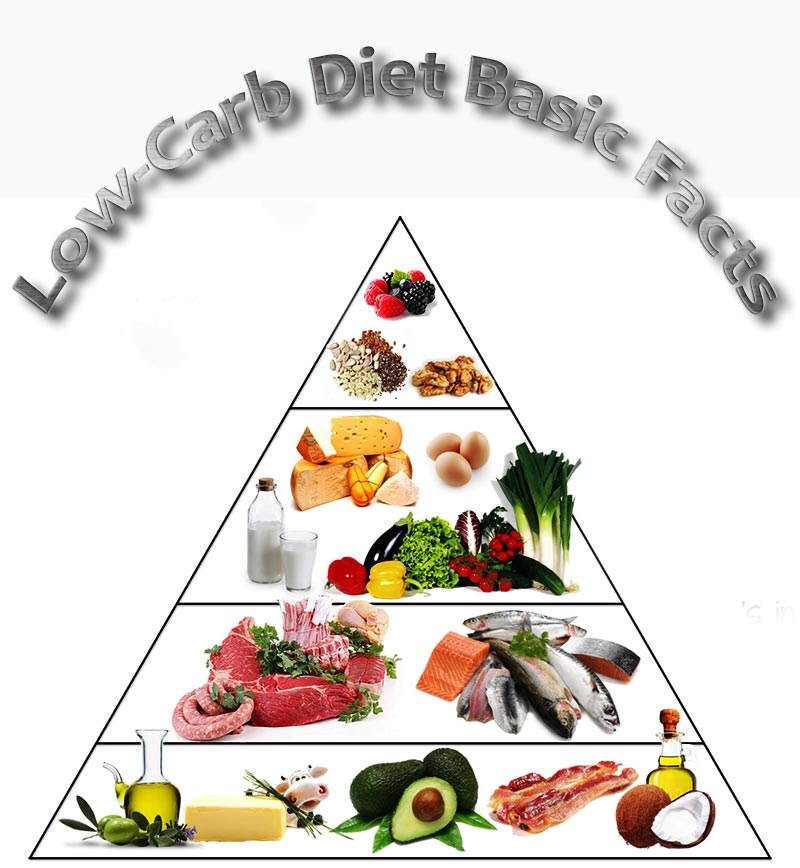
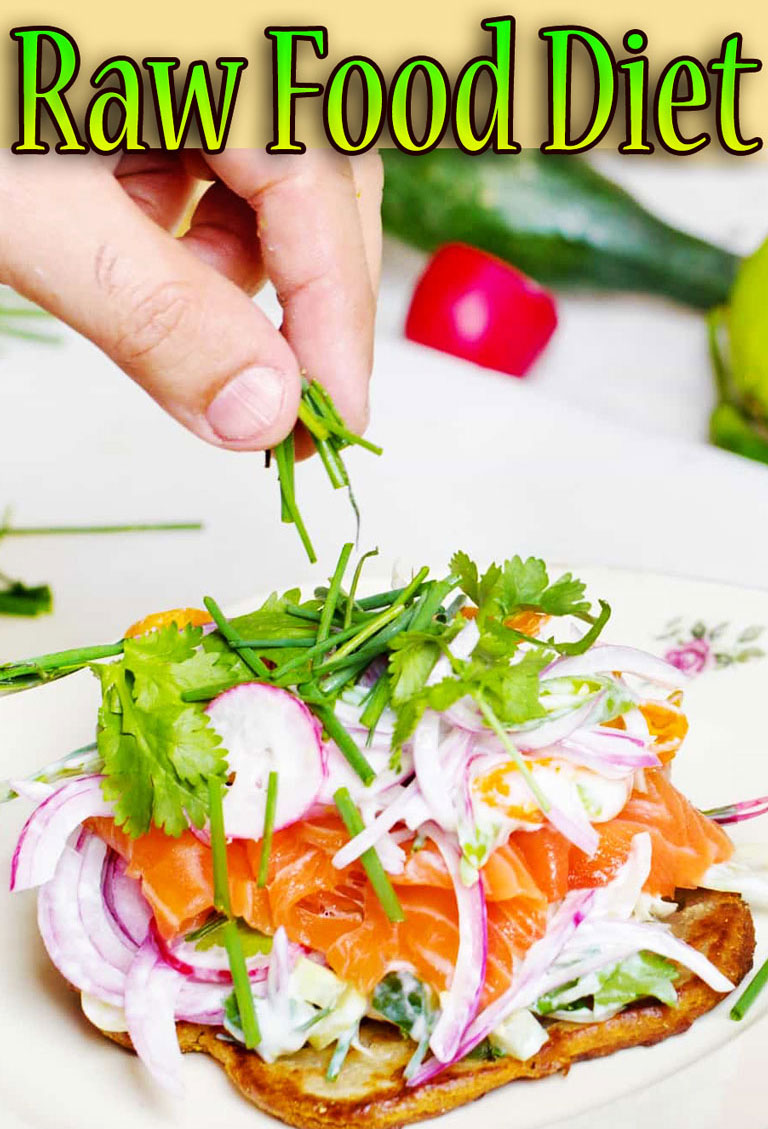
Leave a Reply